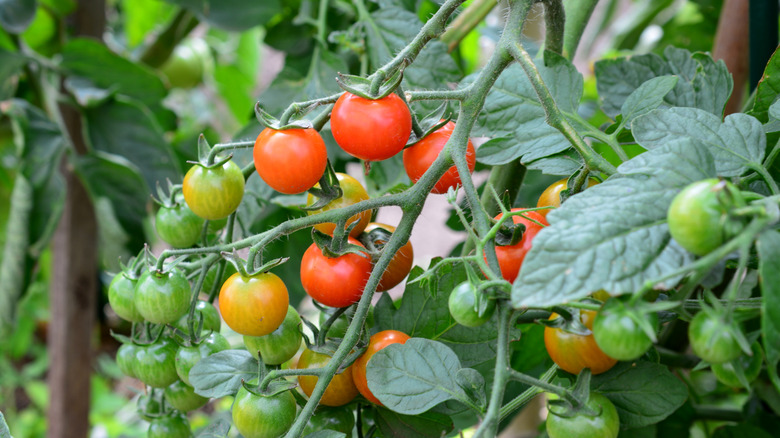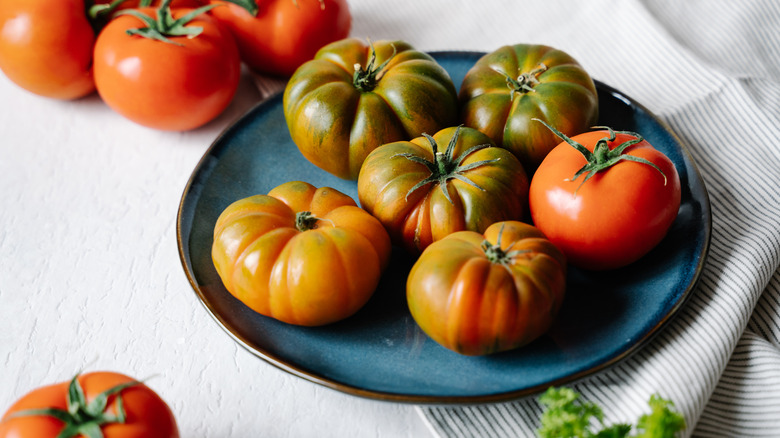The Benefits Of Harvesting Your Tomatoes When They're Slightly Green
Each and every fruit or vegetable in your garden will require different care and growing techniques, and while it would certainly be ideal to harvest everything at once, that likely isn't the case. However, knowing when to pick your edible plants can ensure you get the freshest, tastiest selection before they get too ripe or go off completely. When it comes to tomatoes, you might be surprised to learn that their harvest window comes before their vibrant red color sets in. This trick will help you avoid some common diseases and problems with garden tomatoes and prevent predators from eating them before you can.
Other fruits and vegetables may give off telltale signs they are ready, but think of tomatoes as the exception to the rule, since one of the best times to take them off the vine is when they still show some green. You won't be harming them or risking an unripe pick by removing them before they are fully red, and there are many benefits of harvesting tomatoes when they are still partly green, including saving them from potential pests and preventing spoilage from weather. Additionally, if you want to keep these vegetables fresh for longer, one of the best things you can do is harvest them before they have fully changed color. If you're ready for a little science, tomatoes get to their mature age once they are full size and have partially changed hue, not necessarily when they turn completely red.
Get fresher tomatoes for longer
Tomatoes enter something known as the breaker stage, which means that the fruit develops cells that form a seal against the vine once it is ripe enough to be harvested. This stage is also when the tomato reaches about halfway red. However, if you pull it off before it's fully red, it doesn't affect the taste or quality since the tomato has stopped taking nutrients from its vine already and will continue to ripen on its own. You will also notice that the fruits that have reached this stage are less firm than unripened green tomatoes, which will be a good indicator of which are ready to pick. If the fruit is soft enough to squeeze, it's likely ready. You can also check for other colors appearing on the skin. This might be yellow, orange, red, or even a different green shade.
There are several big benefits to harvesting during this phase. The longer your tomatoes are on the vine, the more susceptible they are to disease-spreading pests, insects, birds, and other foraging animals who will eat and ruin them. Weather can also affect your plants, and heat or frost can cause spoilage. While it's helpful to use pre-planting tips to prevent your tomatoes from splitting, pulling tomatoes off the vine before they get too ripe helps avoid this issue, too. It's also helpful to keep your slightly green tomatoes inside where you can watch as they ripen. This way, you can eat them at the ideal time without waiting too long. Constantly seeing them will ensure they don't go off, as they could if you're not checking your garden every day.

